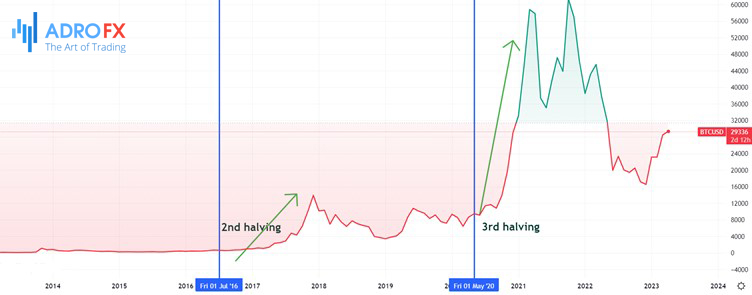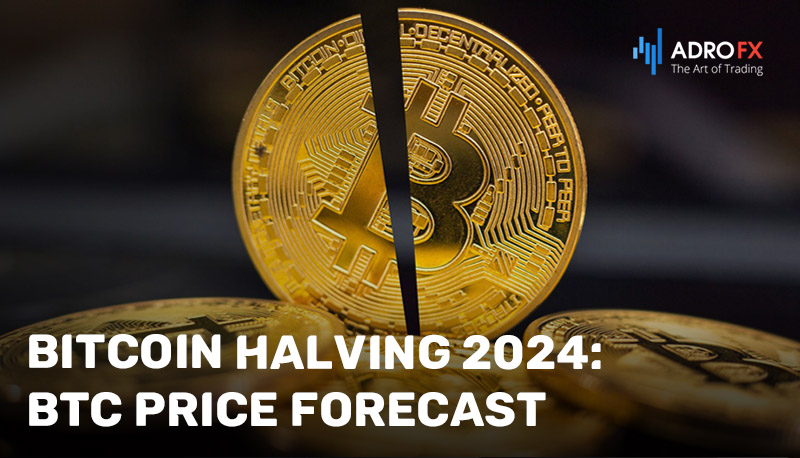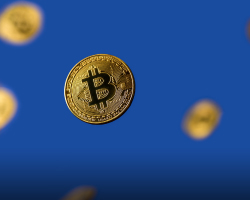Bitcoin Halving 2024: Everything You Need to Know Today

Bitcoin halving is a crucial event in the world of cryptocurrency, which occurs every four years. As we approach the next bitcoin halving, scheduled for 2024, the anticipation and speculation around its impact on the market are increasing. Bitcoin halving is a process where the rewards for mining new blocks on the blockchain network are cut in half, reducing the amount of bitcoin produced every ten minutes. This event has significant implications for investors, traders, and miners, as it affects the supply and demand of bitcoin, and consequently, its price. In this article, we will explore the significance of the bitcoin halving event, its history, and its potential effects on the cryptocurrency market. We will also provide tips on how to prepare for the upcoming halving, whether you are an investor, trader, or miner.
Bitcoin Halving: What Is It and How It Works
Bitcoin halving is a critical event in the history of BTC, which occurs approximately every four years. It is a process that reduces the number of bitcoins produced through mining by half, and it is programmed into the bitcoin protocol to occur after every 210,000 blocks mined. The process is designed to ensure that the total number of bitcoins in circulation is finite, with a maximum of 21 million bitcoins to be produced.
The BTC halving event is a significant event for the entire cryptocurrency industry as it reduces the supply of bitcoin and increases its scarcity. As Bitcoin becomes more scarce, its value is expected to rise, and the market often reacts to the event with increased volatility.
The halving process works by reducing the rewards miners receive for mining new blocks on the bitcoin network.
When a miner successfully adds a new block to the blockchain, they are rewarded with a set number of bitcoins. This reward is currently 6.25 BTC, but during a halving event, it will be reduced to 3.125 BTC. This reduction in the block reward reduces the rate at which new bitcoins are created, ultimately leading to a decrease in the overall supply of bitcoin.
As a result of the halving, miners receive fewer rewards for their work, leading to a potential drop in mining earnings potential. This can lead to a decline in the number of miners contributing to the network and a decrease in the overall hash rate, which could impact the security of the network.
What Is Halving Needed For?
Satoshi Nakamoto created bitcoin in response to the banking crisis of 2008. He tried to develop a monetary system that could work better than the centralized system that already exists. For example, the central bank could print unlimited amounts of conventional currency, leading to hyperinflation. This is what happened in Zimbabwe in 2007.
This should not have happened with bitcoin, since Nakamoto programmed halvings into the protocol of the first cryptocurrency. Bitcoin is getting harder to mine, and the value of each coin is increasing.
Not everyone agrees on exactly how to measure the value of bitcoin. Since most companies don't accept bitcoin as payment, measuring its true deflationary value is difficult.
At the same time, analysts suggest linking the value of bitcoin to the electricity bill used to mine it. This bill is always fixed, and the number of coins miners receive is decreasing.
The last halving happened in May 2020, and in 2021 bitcoin exceeded its historical high - its price was more than $60,000. A similar case occurred after the 2016 halving. The following year, bitcoin hit a record high at the time.
After both of those peaks, bitcoin plummeted. Bitcoin is now down nearly 30% from its record high in November. It is now worth around $26,700.
Bitcoin isn't just affected by halvings. Even more, analysts think that over time, the impact of halving the price will diminish. They attribute this to the fact that more and more countries will accept crypto legally and it will become easier to use.
Historical Dynamics of BTC rate
Bitcoin halving events have been a significant factor in the historical dynamics of bitcoin's price. The first BTC halving occurred in November 2012, reducing the block reward from 50 BTC to 25 BTC. Following this halving, bitcoin's price experienced a significant surge, with its value increasing from around $12 to over $1000 by the end of 2013.
The second halving occurred in July 2016, reducing the block reward from 25 BTC to 12.5 BTC. Following this halving, bitcoin's price remained relatively stable for a few months before experiencing a significant surge in late 2017, with its value reaching an all-time high of nearly $20,000. However, this surge was followed by a sharp correction, and bitcoin's price fell to around $3,000 in late 2018.

The most recent bitcoin halving occurred in May 2020, reducing the block reward from 12.5 BTC to 6.25 BTC. Following this halving, bitcoin's price experienced a steady increase, reaching an all-time high of over $65,000 in November 2021. However, it has since experienced a correction, with its price trading around $20,000-$30,000 as of April 2023.
The historical dynamics of bitcoin's price in terms of halving events suggest that the reduction in the block reward and the resulting decrease in the rate of bitcoin's supply growth can lead to an increase in its scarcity and value. However, other factors, such as market demand, adoption, and regulatory developments, can also impact bitcoin's price and make it difficult to predict the exact effects of halving events on the market.
How Bitcoin Halving Affects Miners
After a bitcoin halving event, the block reward received by miners is reduced by half. This reduction in rewards can have significant implications for bitcoin miners.
Firstly, it can reduce the return rate of bitcoin mining operations, as miners receive fewer bitcoins as rewards for their efforts. This can lead to a decline in the number of miners contributing to the network, as less successful miners may choose to shut down their operations.
Secondly, it can lead to an increase in the competition among miners. As the block reward decreases, miners may need to find more efficient ways of mining BTC to remain beneficial. This can lead to an increase in the hash rate, which is the measure of the total computational power contributed to the bitcoin network.
Thirdly, it can impact the security of the bitcoin network. A decline in the number of miners contributing to the network can lead to a decrease in the overall hash rate, which could potentially make the network more vulnerable to attacks.
Overall, the reduction in rewards after a bitcoin halving event can have significant implications for miners. While it can lead to an increase in the competition and the overall security of the network, it can also reduce the yield of mining operations and potentially lead to a decline in the number of miners contributing to the network.
Consequences for the Cryptocurrency Market
Bitcoin halving events can also have significant consequences for the broader cryptocurrency market. The reduction in the rate of bitcoin supply growth can impact the overall supply-demand dynamics of the cryptocurrency market, potentially leading to changes in the prices of other cryptocurrencies.
One potential consequence is that the reduction in bitcoin supply growth could increase the scarcity of the cryptocurrency, leading to an increase in its value. This could have a positive spillover effect on other cryptocurrencies, as investors may look to diversify their portfolios and invest in alternative cryptocurrencies.
Another consequence could be increased volatility in the cryptocurrency market. bitcoin halving events can lead to increased uncertainty and speculation, potentially leading to price swings and market corrections. These fluctuations could also impact other cryptocurrencies, as investors may become more risk-averse and move their investments to more stable assets.
Furthermore, BTC halving events can also impact the overall sentiment and confidence in the cryptocurrency market. A successful halving event that results in increased demand and price appreciation could boost the confidence of investors and increase interest in the broader cryptocurrency market. On the other hand, if the event leads to a decline in prices and a decrease in market demand, it could have a negative impact on the overall sentiment of the market.
In summary, bitcoin halving events can have significant consequences for the cryptocurrency market, including changes in supply-demand dynamics, increased volatility, and impacts on overall market sentiment and confidence. These consequences can impact the prices of other cryptocurrencies, making it important for investors to closely monitor the developments and trends in the cryptocurrency market.

Bitcoin Halving 2024: BTC Price Forecast
Bitcoin halving events have historically been associated with significant price movements, and the upcoming halving in 2024 is likely to have some impact on the price of bitcoin.
The exact impact of the 2024 bitcoin halving on the price of BTC will depend on a variety of factors, including market demand, adoption, regulatory developments, and overall global economic conditions. It's also important to note that the cryptocurrency market can be highly volatile and unpredictable, making it difficult to accurately forecast prices.
That being said, some analysts and investors have speculated that the 2024 bitcoin halving could lead to a significant increase in the price of bitcoin, as the reduction in the rate of bitcoin supply growth could increase its scarcity and value. Others have suggested that the impact of the halving may be less significant than in previous halving events, as the market has already priced in the expected reduction in block rewards.
Ultimately, it's important for investors to carefully consider their investment strategies and monitor the developments in the cryptocurrency market leading up to the 2024 bitcoin halving, as there is no guaranteed outcome and the market can be highly unpredictable.
Bitcoin halving event is a crucial moment in the cryptocurrency industry that occurs every four years. The halving reduces the rewards for mining new blocks on the bitcoin network, leading to a reduction in the overall supply of bitcoin and an increase in its scarcity. The historical dynamics of bitcoin's price have shown that halving events can lead to significant market volatility, with bitcoin's value experiencing surges and corrections. The reduction in rewards can also impact miners, reducing their lucrativeness and potentially leading to a decline in the number of miners contributing to the network. Overall, it is essential for investors, traders, and miners to understand the implications of halving events and prepare for potential market volatility.
Basically, there are two scenarios:
Optimistic
If the previous trend continues, we will probably see a tangible rise in the value of BTC a few months before 2024 halving. Perhaps new value records after the halving as well.
Based on this assumption, analysts at leading asset management firm Pantera Capital believe the bitcoin price could reach $149,000 after another halving - presumably closer to 2025.
A well-known crypto investor gives a less optimistic forecast:
"Now may be a good time to get greedy in the cryptocurrency market, as bitcoin could soon - by March 2024 - rise to $63,000. This will happen when cryptocurrency mining fees are likely to be halved by a programmed code that reduces the rate of supply expansion by 50 percent every four years," explains Marcus Thielen, head of research and strategy at Matrixport, which manages more than $10 billion in assets.
Marcus' positive outlook is based on the assumption of BTC's ability to repeat the bullish movement seen in the run-up to the halving in July 2016 and April 2020. In those cases, the bullish trend was observed months before the halving, and in the month of the halving, bitcoin was trading 39% higher than it had been two years earlier.
And if history still serves as our guide, bitcoin could reach $63,000 by March 2024.
Elon Musk, too, thinks the crypto winter will end in anticipation of the next halving. And while he's no expert in the field, he has a clear talent for managing non-professional investors. And they are the ones who often buy up everything their "techno-icon" says.
Pessimistic forecasts
t should be noted that not all analysts expect BTC to grow in the coming years. Many believe that the current bitcoin halving cycle will be much more bearish than before. It's all about a combination of several crisis factors at once:
- Excessive issuance. The policy of quantitative easing and the distribution of "helicopter" funds to revive the economy after the COVID-19 pandemic is coming to an end, which will reduce the amount of "hot" finances in the market and a strong dollar - both of these factors previously had a negative impact on the price of the first cryptocurrency.
- Rising interest rates. In addition to the above, the US and the EU have begun to raise interest rates much faster than expected. With higher interest rates, it will be harder to borrow capital and pay back loans. Consequently, private investors and companies will have less funds to invest.
- Geopolitics. Large-scale invasion of Ukraine by the Russian Federation. Russia's aggression and retaliatory sanctions have severed many supply chains, causing higher inflation and increased crises around the world. From Africa and Asia, where food prices have doubled or tripled, to large companies relocating their production from Russia and also from China (many expect Xi Jinping - following Putin's example - to attack Taiwan).
Conclusion
All in all, the bitcoin halving event, which occurs approximately every four years, is a crucial process that reduces the rewards for mining new blocks on the blockchain network by half, ultimately leading to a decrease in the overall supply of Bitcoin. As we approach the next halving event scheduled for 2024, investors, traders, and miners are anticipating its potential impact on the market, with increased speculation around its effects on the supply and demand of bitcoin, and its consequent price. While historical dynamics suggest that halving events can lead to an increase in bitcoin's scarcity and value, other factors such as market demand, adoption, and regulatory developments can also affect bitcoin's price and make it difficult to predict the exact effects of halving events on the market. Therefore, preparation and caution are necessary for investors, traders, and miners to navigate the potential effects of the upcoming halving event.

About AdroFx
Established in 2018, AdroFx is known for its high technology and its ability to deliver high-quality brokerage services in more than 200 countries around the world. AdroFx makes every effort to keep its customers satisfied and to meet all the trading needs of any trader. With the five types of trading accounts, we have all it takes to fit any traders` needs and styles. The company provides access to 115+ trading instruments, including currencies, metals, stocks, and cryptocurrencies, which make it possible to make the most out of trading on the financial markets. Considering all the above, AdroFx is the perfect variant for anyone who doesn't settle for less than the best.









